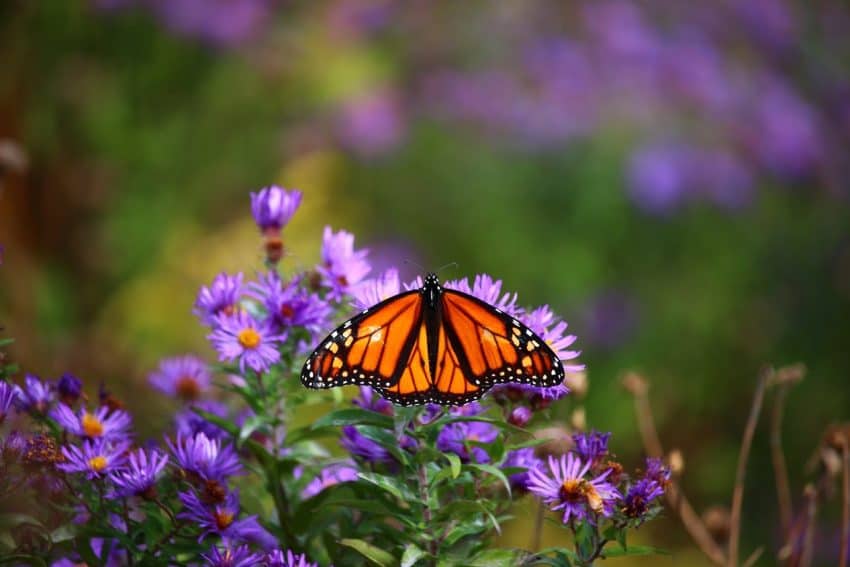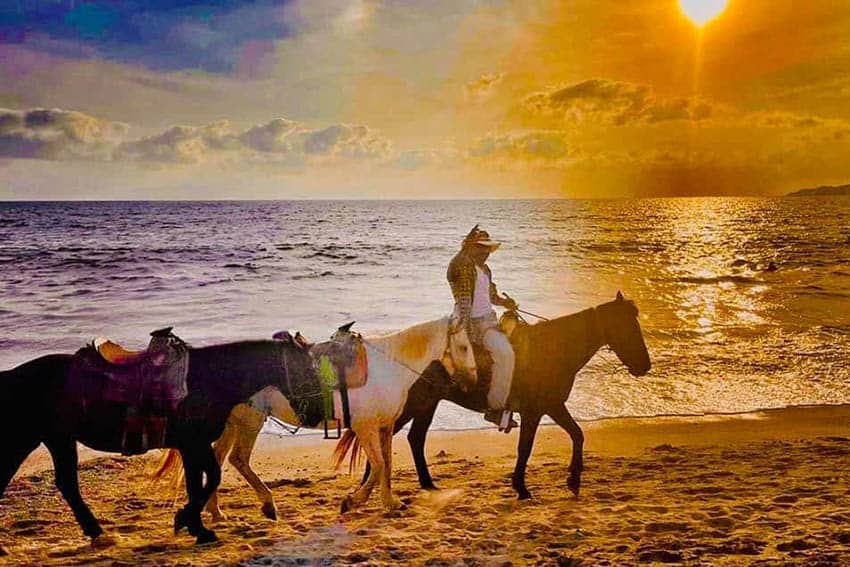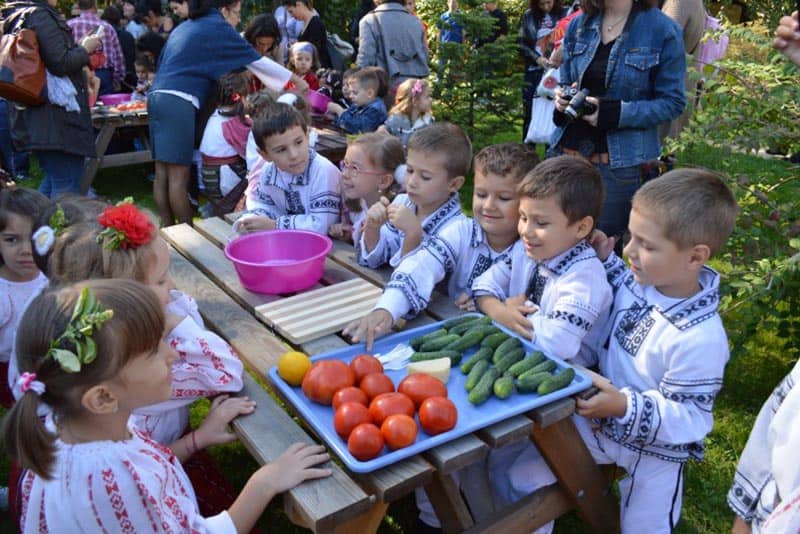
In the Land of the Butterflies: Visiting the Monarch Butterfly Biosphere Reserve in Mexico
By Molly Beer

 So often, travel aims for the superlative: the tallest mountain, the whitest beach, the greatest distance, the wildest ride.
So often, travel aims for the superlative: the tallest mountain, the whitest beach, the greatest distance, the wildest ride.
But, sometimes, small things can evoke awe of equal magnitude. Particularly small things in very large numbers.
The monarch butterfly—so everyday fluttering around roadside milkweed—is one such marvel.
Here’s why:
Monarchs migrate. Those that summer west of the Rockies migrate to California, a noteworthy 500-mile trip. But those that summer east of the Rockies migrate to Central Mexico, flying over 2,000 miles to congregate in the precise mountainside fir groves their ancestors—several generations back—left the previous spring.
Then, in one of those surreal feats of nature, the females, even though they haven’t eaten since they began this unfathomable journey, fly back again.’
UNESCO World Heritage Site
Living in highland Mexico for the year with two small children, I was more than a little eager to visit the Monarch Butterfly Biosphere Reserve, a UNESCO World Heritage Site, to witness the wintering monarch colonies.
Granted it was a little early to talk metamorphosis (my oldest was not yet three), but children spend a lot of time contemplating magic, and, really, what could be more magical than a few million monarchs flitting about like brilliant confetti?
Visiting the Monarchs

The most common way that tourists see the monarchs in Mexico is via either Morelia, the capital of Michoacán (itself a World Heritage Centre), or Mexico City.
But these two cities are each a full two hours’ drive, assuming that there is no traffic, from the mountains where the butterflies congregate.
To make this a day trip, tours leave early in the morning, arrive in the village of Angangueo in time for visitors to ride horses up to the heavily visited El Rosario colony, snap some pictures, and descend again, all before a late lunch and a siesta during the van ride back.
I’ve never been one of those marathon travelers racing to tick off items on my life list.
I prefer to take my time and savor a place. Furthermore, we were traveling with small children, and our visits to the Monarch Biosphere Reserve were to be the crowning moments of our travels in Mexico. In short, we wanted to do full justice to the butterflies.
Angangueo
For our first excursion to the Monarch Biosphere Reserve, since we were six with the visiting grandparents, we rented a mini-van in Morelia and took the scenic but stomach-churning old highway (MX 15) to Angangueo, where we checked into a pair of over-priced, shabby, but serviceable, hotel rooms at a hotel called Don Bruno’s (Spanish helps at this particular establishment, as does fluency in the idiosyncrasies of Mexican hotels).
Then we explored the village, which had been largely washed out in a flash flood the previous spring. While the town’s central plaza was pretty enough, most of our attention was captured by the destruction (and, toddler-style, the heavy equipment pushing it around).
During our stroll, we were approached by a guide who offered to take us to El Rosario the next morning. When we told him we actually planned to visit Sierra Chincua, he insisted that our vehicle wouldn’t make it up the road, and that, anyway, that there were hardly any butterflies there. This worried us, but inspired by the recklessness inherent to driving a fully insured rental vehicle, we knew we’d try our luck down the road less traveled.
Santuario Sierra Chincua
Sierra Chincua is an ejido, or a traditional community that manages its land communally. Nearly all of Sierra Chincua’s income comes from butterfly tourists—nearly 60,000 visitors each winter according to their website.
In light of this, the ejido has built a brand new, solar-powered visitors’ center (at the end of a perfectly good road) composed of souvenir shops and small restaurants named for the Doña manning the tortilla comal therein. Had we guessed we could order a picnic lunch to eat in the forest, we would have spared ourselves the trouble of bringing lunch.

Guides are required to visit the sanctuary, and the unlucky man who was first in that morning’s rotation (he would be the last to return in the evening) was Pedro.
If Pedro minded that we bypassed the corral of saddled horses (I believe that my kids are too small for horseback riding), he said nothing.
If he minded that I, still weak from pregnancy and walking carefully with the baby wrapped to my chest, hiked about as speedily as a three-toed sloth, and my maniacal toddler, when loosed from his “daddy saddle,” walked the wrong way as often as not, he said nothing.
He just pointed out good spots to take in the sweeping vista of the valley below and relayed stories of the Japanese lepidopterist who once lived within the colony.
A Long Hike
What Pedro did not relay, and we did not think to ask, was that the Sierra Chincua colony had settled in much lower down on the mountainside than in years past. Based on our guidebook pre-reading, we were anticipating a 2 to 3-kilometer hike in to the colony along a more-or-less level ridgeline.
And indeed, the well-maintained hiking trail, which is different from the route taken by the horseback riders, had benches to rest on, lookouts, and explanatory signs in Spanish and English.
Then this path ended and we began to descend on a rutted footpath through the firs that, as evidenced by the bits of orange wing scattered over the ground, had once been the monarchs’ domain. (Note: there are horses available at the colony as well for those who hike in but would prefer not to make the steep hike out.)

AFlame with Butterflies
Then, more suddenly than I could have anticipated even after such a distance, we came into a glen sliced with shafts of sunlight and aflame with butterflies.
The firs were dense with resting monarchs, and the patches of blue sky above were sparked with orange. When a breeze blew through, flurries of butterflies rushed upward and then scattered.
Monarchs landed in my hair, on my children, on the purple flowers that grew where sunlight reached the forest floor. And the spectacle was not the whole of it: the quiet of the forest was filled it a steady papery whisper, the sound of millions of butterfly wings beating. It was, as I had hoped, absolutely magical.
That is, until my toddler began jabbing at butterflies with a stick.
Zitácuaro
One month later, in February, my sister came to Mexico and we set out again to see butterflies, this time taking the interstate toll-road and basing in Zitácuaro where we treated ourselves to a casita at the beautiful (albeit pricey) Rancho San Cayetano.
Zitácuaro is a much bigger city than Angangueo, and rumor has it there are interesting things to see, but I confess that we spent most of our time reading magazines in the orange grove or poolside while my toddler spun out across San Cayetano’s sweeping lawns.
In the evening, my sister squeezed lemons she’d foraged from the tree by our casita and made margaritas, and then we split up for dinners—leaving the kids to eat room service with whoever was on duty that night while the other two grownups ate in the restaurant (the only awkwardness here being that on my night to eat alone with my husband—a rare treat and Valentine’s Day besides—the charismatic owner assigned himself and another traveler to our table for dinner).
Cerro Pelón

A day later than planned, we managed to drag ourselves away from Rancho San Cayetano to see some butterflies.
This time, I knew to ask about the distance, the state of the trails, and the altitude gain—all of which promised to be more challenging than we’d seen at the more developed Sierra Chincua site. So I capitulated, somewhat, on the horses.
My son and I rode a diminutive mule that he christened “Speedy,” my sister and the gear rode a shaggy, bridle-less pony, “Speedy-Also,” and my husband led the way on foot, carrying the baby ahead of the dust churned up by Speedy and Speedy-Also’s dragging hooves.
After an hour’s ascent, we dismounted in a clearing dotted with mesquite and cow pies. Butterflies fluttered past, but a dozen meters down a livestock track, we came upon Cerro Pelón’s colony. Here, in full sun, fir trees drooped under the weight—I’ll write that again—under the weight of butterflies, and we had to drag our feet on the ground to avoid stepping on others.
As it turned out, it wasn’t just the weather that had heated up since our first butterfly trip one month earlier: the monarchs were getting busy with the purpose of their long trip. Those that weren’t mating mid-air were fluttering their stuff.
In sum, the population at Cerro Pelón was conspicuously larger and more concentrated than we’d seen at Sierra Chincua, but the exposed setting wasn’t quite as pretty as the sun-dappled glen the latter colony has inhabited, nor was the trail as panoramic as Sierra Chinua’s ridgeline hiking trail.
Comparisons aside, the butterflies were magnificent in both places, and well worth the effort to see for ourselves. Even my sister, who had been a little ambivalent about visiting a horde of bugs on her vacation, waxed poetic about the whole scene while I took pictures of butterflies perched on her, um, head.
Planning a visit
When to come: The butterflies are in residence in Mexico from December to March, which is the driest stretch of a long dry season in Central Mexico. If you are hoping to have the butterflies more or less to yourself—which is possible at either Sierra Chincua or Cerro Pelón—know that there are big bumps in tourist traffic during the holidays and on weekends.
What to bring: Be advised that at this altitude (reaching 3,000 meters at both sites) wintertime is actually quite cool in Mexico, particularly at night, so be sure to bring warm layers. Also, in terms of photographing the butterflies, you will want to be prepared to shoot at high shutter speeds or to shoot video.
Arranging your trip: If you are coming to see butterflies, and the butterflies are worth coming to see, it is worthwhile to take the schedule a few days for it.
Don’t feel like you have to do one of the drive-bys, one-day package trips from Mexico City or Morelia, although it is certainly possible to get a quick butterfly fix this way.
Buses to Zitácuaro leave regularly from either city, where taxis or public mini-buses (combis) can take you where you want to go.
Alternatively, Rancho San Cayetano can arrange (for a price, of course) everything from transportation to Zitácuaro, to English-speaking guides to any of the sanctuaries that appeal to you (Cerro Pelón is the closest, but Sierra Chincua and El Rosario are not far either).
Be advised that, inconveniently, this hotel accepts only cash or checks.
Security considerations: While petty crime is low in Mexico, transnational criminal organizations (TCOs) are operating in this region, as is the Mexican military. At the time of writing, Michoacán is included in standing travel warnings issued by the U.S. Department of State. Travelers planning to visit Mexico should inform themselves about the situation.
More information:
• UNESCO Monarch Butterfly Biosphere Reserve:
• In Angangueo: Albergue Don Bruno (tel: 715-156-0026 address: Calle Morelos #92): Rates fluctuate (even between reserving and check-in). Expect to pay as much as MX$1000 (cash only) for a double room with a fireplace, breakfast included. Be sure to ask ahead when you want hot water. The garden is nice and so is the American breakfast served in a sunny dining room.
You might also consider Plaza Don Gabino Hotel (tel: 715-156-0322 address: Calle Morelos #147), which gets a few good reviews (I personally did not visit this property).
If you are visiting mid-week when there are likely to be a lot of vacancies, your best bet is to simply show up and look at a few of the (all underwhelming) hotels in person to decide.
 Molly Beer currently lives in Morelia, Mexico, and writes about the culture and politics of family in Mexico. Her travel writing has appeared most recently Salon, Guernica, Glimpse, and Perceptive Travel.
Molly Beer currently lives in Morelia, Mexico, and writes about the culture and politics of family in Mexico. Her travel writing has appeared most recently Salon, Guernica, Glimpse, and Perceptive Travel.
- Saudi Arabia Might Be Your Next Getaway Spot - April 23, 2024
- Mongolia, the Land of Eternal Blue Sky - April 20, 2024
- These 9 U.S. National Parks Require Reservations in 2024 - April 17, 2024





